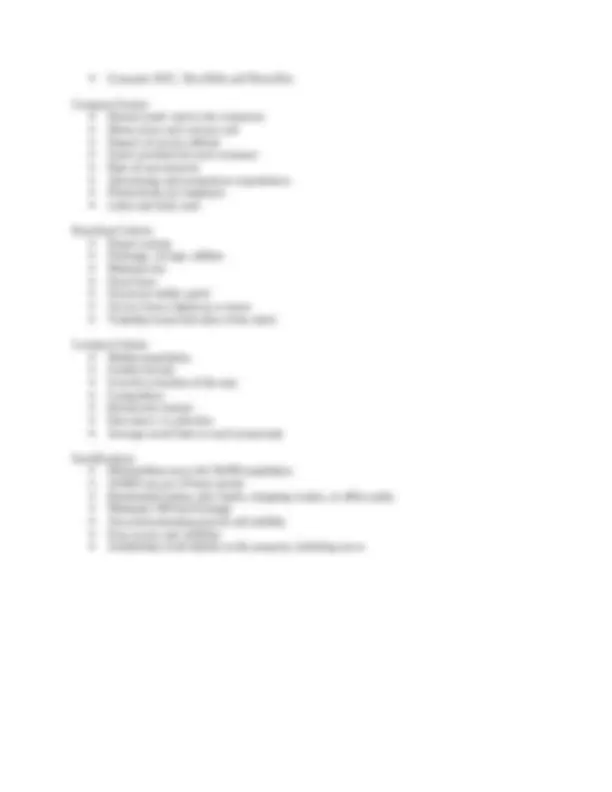



Study with the several resources on Docsity

Earn points by helping other students or get them with a premium plan


Prepare for your exams
Study with the several resources on Docsity

Earn points to download
Earn points by helping other students or get them with a premium plan
Community
Ask the community for help and clear up your study doubts
Discover the best universities in your country according to Docsity users
Free resources
Download our free guides on studying techniques, anxiety management strategies, and thesis advice from Docsity tutors
The best restaurant concepts are created from past mistakes.
Typology: Lecture notes
1 / 2

This page cannot be seen from the preview
Don't miss anything!


Chapter 3 Notes: Concept, Location, and Design Concepts Constitute what will be perceived as the restaurant’s image Could fit a definite target market Best concepts are a result of learning from mistakes Tips Make it different enough from the competition Do not let it be too fat ahead of current times Do not price your menu out of the market Pay attention to food costs Make your concept profitable Good concepts are on-trend Make your concept identifiable Task inspiration from others and love your concept Make sure the concept and location fit Protecting a Restaurant’s Name Lawsuits over names happen Loss to the right of a name means changing signs, menus, promo material, many costs McDonald’s Concept: all-American family restaurant Clean, wholesome, inexpensive, and fun Simple, straightforward menu o Key to effective advertising Selecting a Concept Markets must find it appealing Needs appealing factors Successful Concepts Applebee’s Spago Panera Bread Lettuce Entertain You Enterprises Corner Bakery Café Hard Rock Café Union Square Hospitality Group When a Concept Fails Concept can be changed to fit the market Name, décor, and menu can be changed New concept may better appeal to the same market Symbology Logo, line drawings, linen napkins, and service uniforms Creates atmosphere Yum Brands Largest of all restaurant companies
Concepts: KFC, Taco Bell, and Pizza Hut Common Factors Human needs met by the restaurant Menu prices and cost per seat Degree of service offered Space provided for each customer Rate of seat turnover Advertising and promotions expenditures Productivity per employee Labor and food costs Knockout Criteria Proper zoning Drainage, sewage, utilities Minimal size Short lease Excessive traffic speed Access from a highway or street Visibility from both sides of the street Location Criteria Market population Family income Growth or decline of the area Competition Restaurant concept Downtown vs suburban Average travel time to reach restaurants Specifications Metropolitan area with 50,000 population 20,000 cars per 24-hour period Residential backup, plus hotels, shopping centers, or office parks Minimum 200-foot frontage Area demonstrating growth and stability Easy access and visibility Availability of all utilities to the property, including sewer